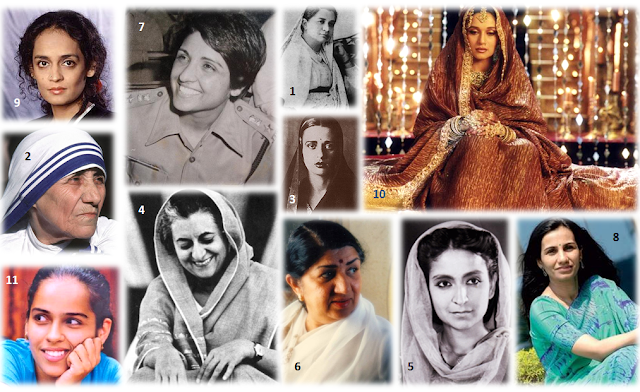Jewels of Mughal Architecture from India
Maintaining Turko-Mongol practices, Mughals transferred the Persian literary and culture to India. Beyond any doubt, it formed the base for Spreading Islam in South Asia. Cultural and economic progress, as well as religious harmony, made India home under the rule of Akbar the Great. The reign of Shah Jahan was the golden age of Mughal architecture with many splendid monuments. Here is a list of few notable structures, built during Mughals, explaining the glory of Empire. A lover of Indian history and observer of cultural heritage have every reason to cherish visiting these places.
Humayun's Tomb (Delhi) - The tomb of the second Mughal Emperor, Humayun's tomb was built by his wife Hamida Banu Begum in 1562. Being the first garden-tomb in India, it was also the first structure to use red sandstone. The tomb is located with graves of Humayun’s wife and son of the later Emperor Shah Jahan - Dara Shikoh. The burial technique of Indo-Islamic architecture inspired the other Mughal buildings like the Taj Mahal.
Agra Fort - Realizing the significance of the city, Akbar made Agra his capital and got Agra Fort built with red sandstone from Rajasthan in 1565. Visible from gardens of the Taj Mahal, Red Fort of Agra is chief 16th-century Mughal monuments. Being residence of Mughal rulers for generations, the fort is decorated and covered with graceful curves and lofty bastions. Time by time, the fort was rebuilt under the supervision of Akbar, Jahangir and Shah Jahan.
Fatehpur Sikri (Agra) - The cultural Mughal city Fatehpur Sikri was built near the ancient city of Sikri, constructed by Sikriwal Rajput Rajas in 1500. After earning the victory on Sikrigarh, the city became the capital of Mughal Empire from 1571 to 1585. After Jahangir’s second birthday, Akbar decided to shift his capital from Agra to the Sikri ridge, to honor Salim Chishti. Akbar commenced the construction of a planned walled city, taking next fifteen years in planning and construction. The city was abandoned shortly after its completion, owing to the paucity of water. Mughals never returned to the city except for a brief period in 1601. Apart from the imperial buildings complex, ruins of the bazaars of the old city are the main tourist attraction.
Taj Mahal - Crown of palaces, The Taj Mahal was built by Mughal emperor Shah Jahan in memory of his third wife, Mumtaz Mahal. This incorporated complex of structures, employing thousands of artisans and craftsmen, was completed in 1653. The tomb in the center of the complex consists of a symmetrical building topped by a large dome. The exterior decorations are the finest in Mughal architecture, with the application of paint or carvings. The interior chamber of the Taj Mahal is far beyond traditional decorative elements as the inlay work is present in form of semiprecious gemstones. The complex is complemented with 300-metre square Mughal garden, dividing each quarter of the garden into 16 flowerbeds.
Red Fort Complex (Delhi) - The Red Fort Complex was built by fifth Emperor of Mughal Empire, Shah Jahan. Famous for its enormous enclosing walls, made of red sandstone, it is adjacent to older fort of Salimgarh, built by Shah Suri in 1546. The astonishing apartments of fort consist of a row of pavilions, connected by series of water channel, known as the Nahr-i-Behisht.


Comments